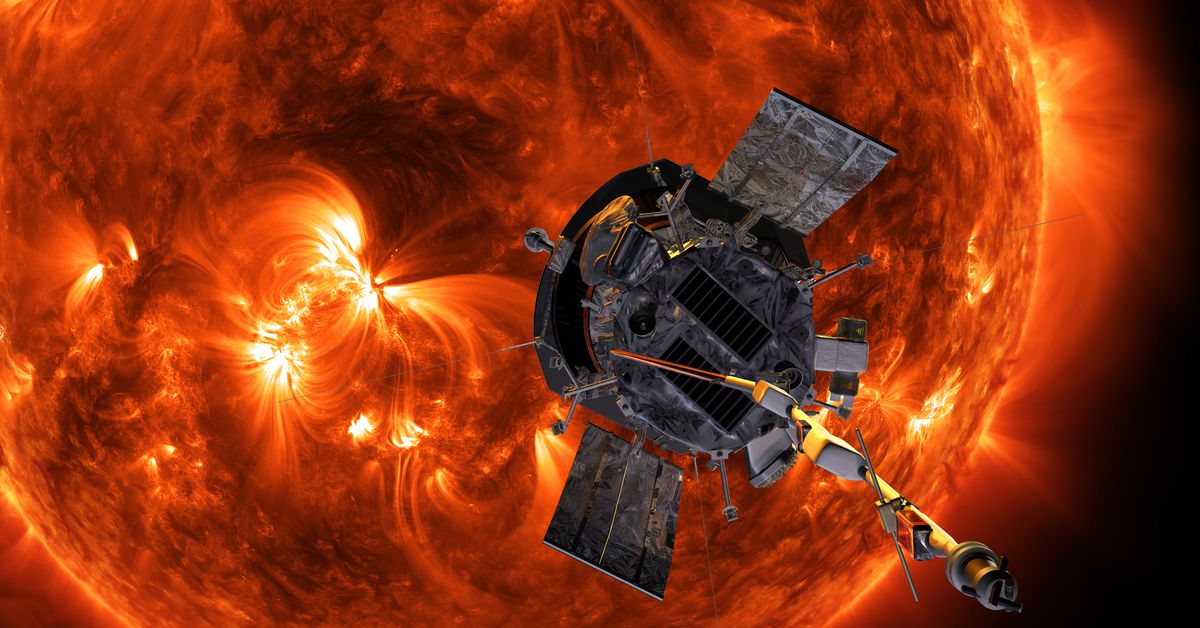In a historic achievement, NASA’s Parker Solar Probe has successfully completed its closest approach to the Sun, flying a mere 3.8 million miles from the solar surface. The probe transmitted a signal back to Earth on December 26th, indicating that it is in good health and operating normally.
A Brief History of the Mission
The Parker Solar Probe was launched by NASA and Johns Hopkins Applied Physics Laboratory in 2018. The mission aims to study the corona, the atmosphere surrounding the Sun, and understand why it gets so hot. To achieve this, the probe is equipped with a sophisticated array of instruments designed to collect data on the solar wind, heat, and energetic particles.
The Closest Approach
On December 24th, the Parker Solar Probe flew by the Sun at an incredible speed of 430,000 miles per hour. During this time, mission operations were out of contact with the probe, as it was too close to the Sun for radio signals to reach Earth. However, NASA’s team had anticipated this and prepared for the event.
NASA’s Confirmation of Success
On December 26th, NASA received confirmation from the Parker Solar Probe that it had survived its close encounter with the Sun. The signal transmitted by the probe indicated that it was functioning normally and sending back data on its status.
What to Expect Next
With the mission’s success confirmed, NASA expects the Parker Solar Probe to send detailed telemetry data on January 1st. This data will provide scientists with a better understanding of solar wind, heat, and how energetic particles are accelerated to near light speed.
The Parker Solar Probe: A Brief Overview
Here is an overview of the key features and specifications of the Parker Solar Probe:
- Launch Date: August 12, 2018
- Mission Duration: Extended through 2025
- Speed: Up to 150,000 miles per hour
- Instruments:
- Integrated Science Investigation of the Sun (ISIS)
- Solar Wind Electrons Alphas and Protons (SWEAP) instrument suite
- Wide-field Imager for Solar Latitude (WISPR) instrument
- FIELDS (Magnetic Fields) instrument
- Heat Shield: A 4.5-inch thick, carbon-carbon composite heat shield that protects the probe from temperatures up to 2,500 degrees Fahrenheit
Understanding the Coronal Heating Problem
The Parker Solar Probe is designed to study the corona, which is a million degrees hotter than the Sun’s surface. Scientists have long been puzzled by this phenomenon, known as the coronal heating problem. The mission aims to provide new insights into why the corona gets so hot and how it affects the solar wind.
How the Parker Solar Probe Survives Close Encounters with the Sun
The Parker Solar Probe is equipped with a unique heat shield that protects it from the intense heat of the Sun’s corona. The shield reaches temperatures up to 2,500 degrees Fahrenheit, while the probe itself remains at just 85 degrees Fahrenheit.
Scientific Significance of the Mission
The Parker Solar Probe mission has significant implications for our understanding of the solar system and its behavior. By studying the corona and solar wind, scientists can gain insights into:
- Solar Wind: Understanding how the solar wind is accelerated to near light speed
- Coronal Heating: Investigating why the corona gets so hot
- Space Weather: Studying the effects of the Sun’s activity on space weather
Conclusion
NASA’s Parker Solar Probe has successfully completed its closest approach to the Sun, marking a major milestone in the mission. The data collected by the probe will provide scientists with new insights into the solar system and help us better understand the behavior of the Sun.
Future Plans for the Mission
The Parker Solar Probe is expected to continue collecting data through 2025. NASA plans to analyze the data and publish findings on a regular basis, providing scientists with a wealth of information on the solar wind, heat, and energetic particles.
Stay Tuned for Updates on the Mission
As more information becomes available, we will provide updates on the Parker Solar Probe mission. Stay tuned for new discoveries and insights into the solar system!
References
- NASA’s Parker Solar Probe Website
- NASA’s Press Release on the Closest Approach
- Scientific American: "NASA’s Parker Solar Probe Enters the Sun’s Corona"






